What Are the Benefits of Using Aluminium Profiles in New Energy Vehicles (NEVs)?
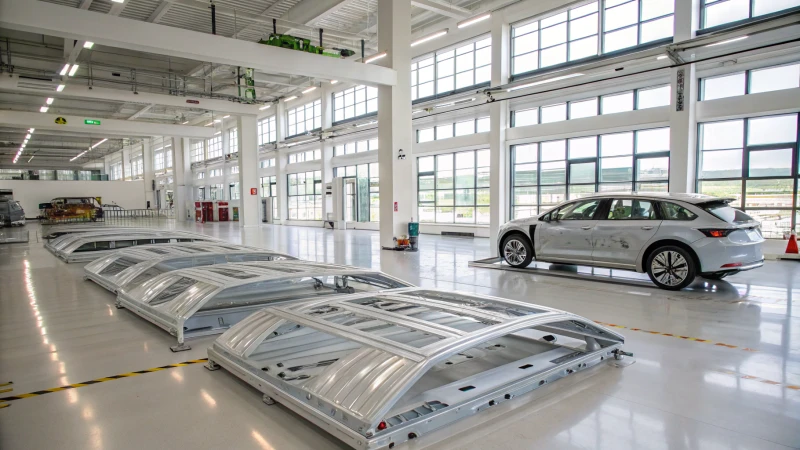
The automotive industry is rapidly evolving towards sustainability, and aluminium profiles are at the forefront of this transformation in New Energy Vehicles (NEVs).
Aluminium profiles are essential in New Energy Vehicles (NEVs) due to their lightweight, strength, and corrosion resistance. They enhance energy efficiency, safety, and performance while supporting sustainable manufacturing practices. Understanding their advantages can help manufacturers make informed material choices.
In this blog post, we will delve deeper into the various benefits of aluminium profiles in NEVs, exploring their applications, manufacturing processes, and the challenges faced by manufacturers in sourcing these materials.
Aluminium profiles improve energy efficiency in NEVs.True
The lightweight nature of aluminium profiles contributes to better energy efficiency in New Energy Vehicles, enhancing overall performance and reducing energy consumption.
Aluminium profiles are heavier than steel components.False
Aluminium is significantly lighter than steel, making it a preferred choice for enhancing vehicle performance and efficiency in NEVs.
How Does Aluminium Improve Energy Efficiency in NEVs?
Aluminium plays a pivotal role in improving energy efficiency in New Energy Vehicles (NEVs). Discover how its unique properties enhance vehicle performance and sustainability.
Aluminium improves energy efficiency in New Energy Vehicles (NEVs) by reducing weight, enhancing structural strength, and facilitating effective thermal management, which collectively increase battery performance and driving range.
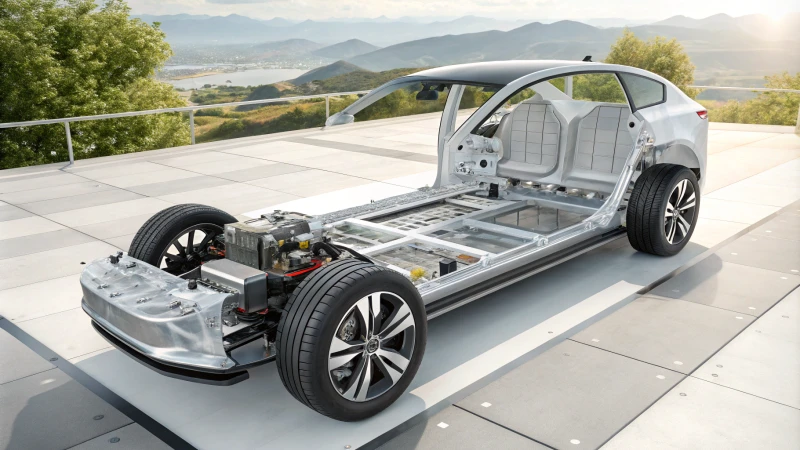
The Lightweight Advantage of Aluminium
Aluminium is renowned for its lightweight properties, significantly contributing to energy efficiency in New Energy Vehicles (NEVs). A lighter vehicle requires less energy to accelerate, which directly impacts the overall energy consumption. This is particularly crucial for electric vehicles where battery performance and range are paramount. By utilizing aluminium in structural components, manufacturers can optimize the vehicle’s performance while enhancing driving range.
For example, the use of aluminium in the chassis not only reduces weight but also improves the strength-to-weight ratio. This means that NEVs can carry heavier batteries without compromising performance or safety. This is an essential consideration for consumers looking for vehicles that offer longer journeys between charges.
Strength and Durability
Another critical aspect is the structural integrity that aluminium provides. Its inherent strength allows manufacturers to create robust components that withstand various stresses and strains during operation. Aluminium profiles used in NEVs can be designed to meet rigorous safety standards without adding excessive weight.
Comparison of Materials in NEVs
| Material | Weight | Strength | Cost | Corrosion Resistance |
|---|---|---|---|---|
| Aluminium | Low | High | Medium | Excellent |
| Steel | High | Moderate | Low | Moderate |
| Composites | Variable | High | High | Variable |
This table illustrates why aluminium is favored in NEV construction. Its combination of low weight and high strength makes it an ideal choice for crucial components like the vehicle frame and battery housings.
Enhanced Thermal Management
Aluminium’s excellent thermal conductivity plays a vital role in managing heat dissipation in NEVs. Efficient thermal management is essential for battery performance, especially in high-demand scenarios like rapid acceleration or long-distance travel. Using aluminium components helps ensure that batteries operate within optimal temperature ranges, thus enhancing their efficiency and lifespan.
Components such as heat sinks and cooling plates made from aluminium can effectively dissipate heat generated by electric motors and batteries, preventing overheating and maintaining performance. This not only increases energy efficiency but also improves safety for users.
Sustainability and Recycling
In the context of sustainability, aluminium stands out due to its recyclability. The life cycle of aluminium can significantly reduce the environmental impact associated with manufacturing new materials. As NEV manufacturers increasingly focus on sustainable practices, aluminium’s ability to be recycled without losing quality makes it an attractive option.
- Recycling Benefits: The recycling process of aluminium consumes about 95% less energy compared to producing new aluminium from ore. This fact highlights the sustainability aspect crucial for companies aiming to reduce their carbon footprint and promote a circular economy.
For those interested in the future of sustainable materials in automotive design, exploring more about sustainable practices in NEV manufacturing could provide valuable insights.
Conclusion on Energy Efficiency
In summary, aluminium enhances energy efficiency in NEVs through its lightweight characteristics, strength, excellent thermal management capabilities, and sustainability benefits. These attributes not only improve vehicle performance but also cater to the growing consumer demand for environmentally responsible automotive solutions.
Aluminium's lightweight nature reduces energy consumption in NEVs.True
Using aluminium decreases vehicle weight, which requires less energy for acceleration, improving overall energy efficiency in New Energy Vehicles.
Aluminium components can enhance battery lifespan in NEVs.True
Aluminium's thermal conductivity helps manage heat, ensuring batteries operate optimally and enhancing their longevity and performance in electric vehicles.
What Are the Key Applications of Aluminium Profiles in NEVs?
Discover how aluminium profiles play a crucial role in enhancing the performance and sustainability of New Energy Vehicles (NEVs).
Aluminium profiles are key in NEVs, utilized in battery trays, chassis, heat dissipation components, and more. Their lightweight and durable properties enhance vehicle performance and support sustainable practices.

Key Applications of Aluminium Profiles in NEVs
Aluminium profiles are pivotal in New Energy Vehicles (NEVs), contributing to various structural and functional components. Their unique properties make them suitable for enhancing performance, safety, and sustainability in automotive design.
1. Battery Box and Battery Trays
One of the most critical applications of aluminium profiles is in the construction of battery boxes and trays. These components must be robust enough to protect sensitive battery systems while maintaining a lightweight profile. The use of aluminium ensures that the overall vehicle weight is minimized, which is essential for electric vehicles aiming for extended range.
For instance, using aluminium alloys like 6061 for battery trays offers a balance of strength and weight, making it an ideal choice for EV manufacturers looking to optimize their designs.
2. Chassis and Frames
Aluminium is also extensively utilized in the chassis and frames of NEVs. The inherent lightweight nature of aluminium alloys contributes to improved strength-to-weight ratios, which can be visualized as follows:
| Component | Material | Weight (kg) | Strength (MPa) |
|---|---|---|---|
| Chassis | Aluminium | 150 | 300 |
| Steel Chassis | Steel | 200 | 250 |
As shown, using aluminium can significantly reduce the weight of the chassis, enhancing performance and efficiency.
3. Heat Dissipation Components
Effective thermal management is vital for NEVs, especially those powered by batteries and electric motors. Aluminium’s excellent thermal conductivity makes it an ideal candidate for heat sinks and cooling plates. These components are crucial for maintaining optimal temperatures during vehicle operation, thereby prolonging battery life and ensuring safety.
Learn more about thermal management in NEVs.
4. Interior Components
The interior of NEVs also benefits from aluminium profiles. From seat frames to dashboard elements, aluminium provides a lightweight yet durable structure that supports design flexibility. For example:
- Seat Frames: Lightweight but strong, allowing for intricate designs without compromising safety.
- Dashboard Components: Aluminium can be shaped into various forms, adding aesthetic value while maintaining functionality.
5. Exterior Panels
In terms of exterior applications, aluminium is used in outer body panels of some NEVs due to its corrosion resistance and design versatility. The ability to mold aluminium into complex shapes enables manufacturers to innovate in vehicle design, creating streamlined and visually appealing forms while ensuring durability against weather elements.
6. Sustainability Considerations
The application of aluminium profiles in NEVs is not only about performance but also sustainability. Aluminium is highly recyclable, aligning with the eco-friendly initiatives of many automakers. By using recycled aluminium, manufacturers can significantly reduce their carbon footprint and energy consumption during production.
This aspect is becoming increasingly important as the automotive industry shifts towards more sustainable practices.
Explore more on sustainability in automotive materials.
Aluminium profiles enhance NEV performance and safety.True
The lightweight nature of aluminium profiles contributes to improved performance and safety in New Energy Vehicles by optimizing structural components.
Aluminium is not recyclable, impacting sustainability.False
Contrary to this claim, aluminium is highly recyclable, supporting eco-friendly practices in the automotive industry and reducing carbon footprint.
Which Aluminium Alloys Are Most Commonly Used in NEVs?
Discover the most common aluminium alloys that are transforming New Energy Vehicles (NEVs) through their unique properties and applications.
The most commonly used aluminium alloys in New Energy Vehicles (NEVs) include 6061, 6063, and the 7000 series (like 7075). These alloys are chosen for their strength, lightweight nature, and resistance to corrosion, making them ideal for critical vehicle components.
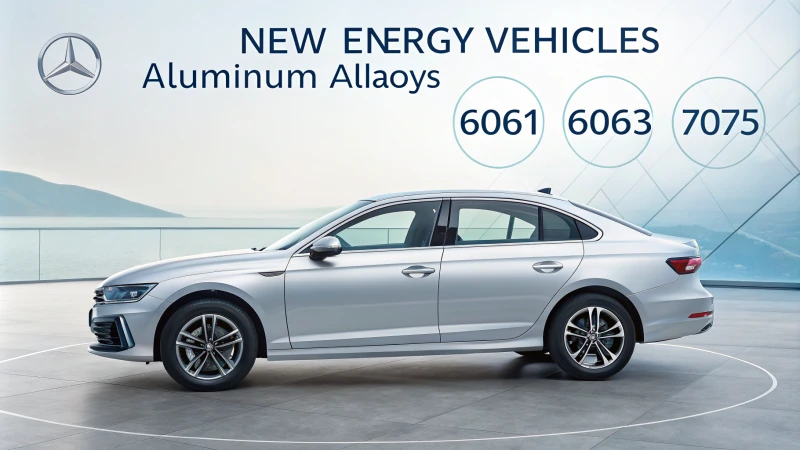
Overview of Aluminium Alloys in NEVs
Aluminium alloys play a vital role in the design and manufacturing of New Energy Vehicles (NEVs). These alloys are selected based on their mechanical properties, weight, and resistance to corrosion, which are crucial for optimizing vehicle performance.
Commonly Used Alloys
-
6061 Alloy
- Characteristics: Known for its excellent mechanical properties and good weldability, 6061 is widely used in structural components.
- Applications: Commonly found in the chassis and frame of NEVs.
-
6063 Alloy
- Characteristics: This alloy is favored for its aesthetic qualities and ability to be extruded into complex shapes.
- Applications: Often used for decorative and trim components due to its smooth surface finish.
-
7000 Series Alloys (e.g., 7075)
- Characteristics: These alloys offer superior strength and are used in high-stress applications.
- Applications: Ideal for critical parts like the vehicle frame and battery housing where weight reduction is essential without compromising safety.
Strength-to-Weight Ratio
The strength-to-weight ratio is a critical factor in NEV design. Using lightweight materials like aluminium helps improve energy efficiency by reducing the overall vehicle mass. Here’s a comparison of common aluminium alloys:
| Alloy | Strength (MPa) | Weight (kg/m³) | Weldability | Common Use |
|---|---|---|---|---|
| 6061 | 260 | 2700 | Good | Chassis, Frames |
| 6063 | 240 | 2700 | Excellent | Trim, Decorative Parts |
| 7075 | 570 | 2810 | Poor | High-Stress Components |
Corrosion Resistance
Corrosion resistance is another crucial property of aluminium alloys, especially in NEVs which face varied environmental conditions. The natural oxide layer formed on aluminium surfaces protects against corrosion, ensuring the longevity of vehicle parts. Here’s how different alloys fare:
- 6061: Moderate corrosion resistance, often treated with anodizing for enhanced protection.
- 6063: Excellent corrosion resistance, making it suitable for exterior applications.
- 7075: While strong, it requires protective coatings to enhance corrosion resistance.
Applications in NEVs
Aluminium alloys are integrated into various components of NEVs, including:
- Battery Boxes: Providing structural integrity while maintaining low weight.
- Chassis and Frames: Essential for maintaining safety standards while reducing mass.
- Heat Dissipation Components: Aluminium’s thermal conductivity aids in managing the heat produced by electric motors and batteries. Learn more about heat management in EVs.
Conclusion on Material Selection for NEVs
Understanding the properties and applications of different aluminium alloys can significantly impact the performance and efficiency of New Energy Vehicles. Selecting the right alloy not only ensures safety and durability but also enhances energy efficiency, crucial for modern automotive design. Explore material selection tips.
6061 alloy is primarily used for NEV chassis and frames.True
6061 alloy's excellent mechanical properties make it ideal for structural components like chassis and frames in New Energy Vehicles.
7000 series alloys are preferred for decorative parts in NEVs.False
7000 series alloys, like 7075, are known for strength, not aesthetics, making them unsuitable for decorative applications in NEVs.
How Does the Manufacturing Process of Aluminium Profiles Impact NEV Performance?
Discover how aluminium profile manufacturing affects New Energy Vehicles (NEVs) performance through advanced techniques like precision extrusion and CNC machining.
The manufacturing process of aluminium profiles significantly impacts NEV performance by enhancing structural integrity, energy efficiency, and durability through precision techniques and material selection.
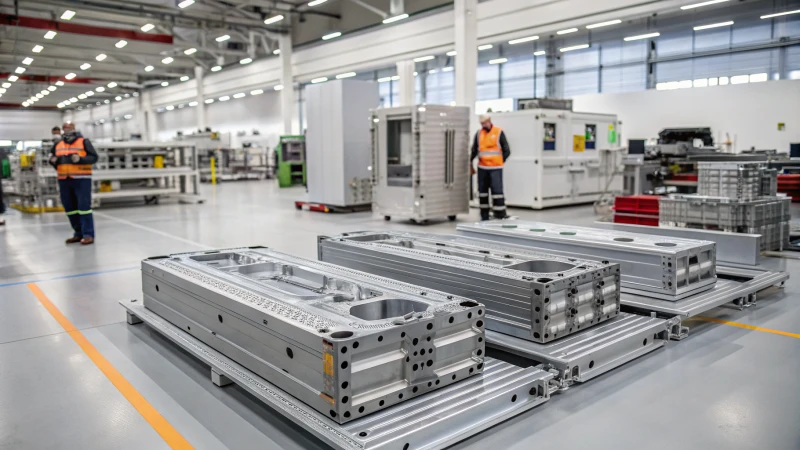
Precision Extrusion and Its Impact
The manufacturing process of aluminium profiles begins with precision extrusion, which is pivotal for NEVs. This method allows manufacturers to create complex shapes and sizes that meet specific design requirements. By controlling the temperature and pressure during extrusion, the desired mechanical properties of aluminium can be achieved, leading to:
- Improved strength-to-weight ratios, essential for vehicle performance.
- Enhanced energy efficiency due to reduced weight, directly affecting battery usage.
For instance, using alloys like 6061 in the extrusion process offers excellent structural integrity, making it suitable for critical components such as chassis and battery trays. The ability to tailor the extrusion process based on vehicle needs makes it a vital aspect of NEV design.
CNC Machining Refinement
Following extrusion, CNC machining is employed to refine aluminium profiles. This step is crucial as it ensures:
- Accurate tolerances for components that need to fit seamlessly within the vehicle structure.
- Enhanced performance characteristics, particularly in high-stress areas like the frame and battery housing.
CNC machining allows manufacturers to create precision parts that contribute to overall vehicle safety and functionality. For example, a well-machined battery tray will not only support the batteries effectively but also improve the thermal management of the entire system.
Surface Treatments for Durability
The durability of aluminium profiles is significantly influenced by surface treatments such as anodizing and coating. These treatments provide:
- Enhanced corrosion resistance, which is essential for components exposed to harsh environmental conditions.
- Aesthetic improvements that can elevate the vehicle’s appeal.
Incorporating these surface treatments means that parts can withstand prolonged exposure to moisture and UV radiation, ultimately prolonging the lifespan of key components in NEVs. The table below summarizes common surface treatments:
| Treatment Type | Benefits | Typical Applications |
|---|---|---|
| Anodizing | Corrosion resistance, improved wear | Battery trays, frames |
| Coating | Aesthetic appeal, additional protection | Exterior panels, interior components |
| Painting | Customizable appearance | Decorative parts, trims |
Alloy Selection and Performance Impact
The selection of aluminium alloys plays a critical role in the performance of NEVs. Different alloys offer varying properties that can enhance functionality and safety. For example:
- 6063 Alloy is often used for its smooth surface finish and good corrosion resistance, making it ideal for exterior applications.
- 7000 Series Alloys provide superior strength necessary for high-stress applications, particularly in structural components.
Choosing the right alloy can lead to significant improvements in vehicle performance metrics such as handling and energy efficiency. Understanding these material properties allows engineers to design NEVs that excel in both performance and sustainability.
Challenges in Manufacturing Process
Despite the advantages of using aluminium in NEVs, challenges remain in the manufacturing process. Issues such as:
- Material certification to meet safety standards.
- The need for customization to fit unique design specifications.
- Balancing cost versus performance while maintaining high quality.
These challenges can impact lead times and production costs but addressing them effectively can enhance overall NEV performance.
In summary, the manufacturing processes of aluminium profiles — from precision extrusion and CNC machining to surface treatments and alloy selection — play a pivotal role in influencing the performance characteristics of New Energy Vehicles. Understanding these processes helps manufacturers produce lighter, stronger, and more efficient vehicles that meet modern consumer demands.
Precision extrusion improves NEV strength-to-weight ratios.True
Precision extrusion enhances the mechanical properties of aluminium, crucial for improving strength-to-weight ratios in New Energy Vehicles, thus boosting performance.
Surface treatments reduce corrosion in aluminium components.True
Surface treatments like anodizing significantly enhance corrosion resistance, prolonging the lifespan of aluminium components exposed to harsh conditions in NEVs.
What Challenges Do Manufacturers Face When Sourcing Aluminium for NEVs?
Manufacturers of New Energy Vehicles (NEVs) encounter various challenges when sourcing aluminium. From ensuring quality certifications to dealing with customization needs, these hurdles can significantly impact production timelines and costs.
Manufacturers face multiple challenges when sourcing aluminium for New Energy Vehicles (NEVs), including material certification compliance, customization difficulties, cost vs. performance balance, and supply chain disruptions.
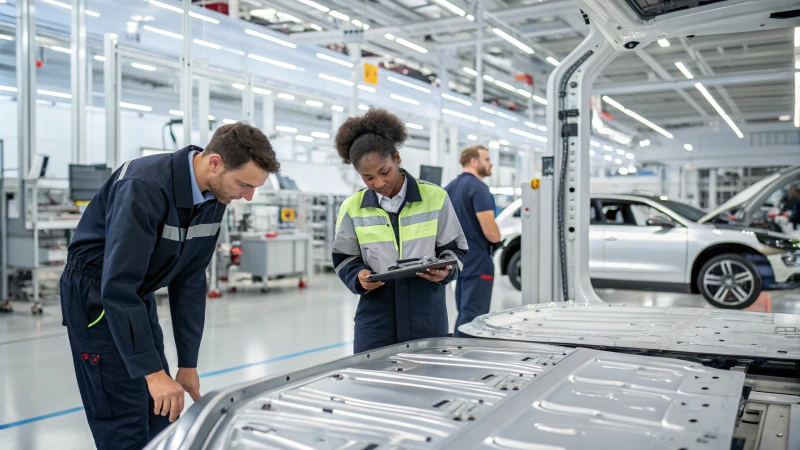
Material Certification Challenges
One of the foremost challenges manufacturers face when sourcing aluminium for NEVs is ensuring that the material meets stringent safety and performance standards. Aluminium profiles must be certified to comply with international standards such as ISO 9001, which ensures quality management, and ISO 14001, which focuses on environmental management.
Verifying compliance can be a lengthy process, as it involves rigorous testing and documentation from suppliers. The need for comprehensive material certification can significantly delay the manufacturing process, impacting the overall timeline for NEV production.
For more insights on material standards, check out this detailed guide.
Customization Issues
NEV designs often require customized aluminium profiles to meet specific structural and aesthetic needs. Manufacturers frequently encounter difficulties in finding suppliers who can deliver tailored solutions, particularly when low to medium volumes are involved.
The challenge lies in balancing customization with production efficiency. Suppliers may not have the capacity to produce specialized profiles, leading to longer lead times or increased costs. This can hinder innovation in NEV design, as manufacturers strive to push the boundaries of lightweighting and performance.
To explore effective customization strategies, refer to our expert recommendations.
Cost vs. Performance Dilemma
While aluminium is known for its excellent performance characteristics, its cost can pose a significant challenge. The price of aluminium can fluctuate due to market demand and availability, making it a critical consideration for manufacturers. They must carefully balance the cost of materials against the performance benefits they provide.
Manufacturers may find themselves choosing between lower-cost alternatives that might compromise quality and performance or investing in higher-grade aluminium that meets their stringent requirements but strains their budget.
Understanding the financial dynamics of sourcing aluminium can be complex. For a deeper analysis, check out this financial overview.
Supply Chain Disruptions
The sourcing of aluminium for NEVs is also susceptible to supply chain disruptions. Factors such as geopolitical tensions, trade tariffs, and raw material shortages can impact the availability of aluminium profiles. Manufacturers must develop robust supply chain strategies to mitigate these risks and ensure timely delivery of materials.
Building relationships with multiple suppliers and considering local sourcing options can help manufacturers navigate these challenges more effectively. Having a flexible supply chain also allows manufacturers to adapt quickly to changes in demand or material availability.
For strategies on building resilient supply chains, visit our resource center.
Manufacturers must verify aluminium material certifications.True
Ensuring aluminium meets international standards like ISO 9001 and ISO 14001 is crucial for manufacturers, impacting NEV production timelines.
Customization of aluminium profiles is rarely a challenge for suppliers.False
Finding suppliers who can deliver tailored aluminium solutions often proves difficult for manufacturers, especially at low to medium volumes.
Conclusion
Aluminium profiles enhance New Energy Vehicles’ performance through lightweight construction, structural integrity, thermal management, and recyclability, supporting sustainability and energy efficiency in modern automotive design.



